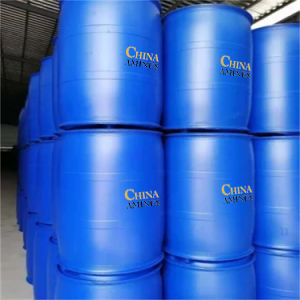1. Chemical Structure and Properties
Molecular Formula: HBr (anhydrous) or HBr(aq) (aqueous solution)
Structural Features:
A strong monoprotic acid composed of hydrogen and bromine atoms. In aqueous solutions, it fully dissociates into H⁺ and Br⁻ ions.
Physical Properties:
Appearance: Colorless to pale yellow liquid (48–62% aqueous solution); pungent odor.
Boiling Point: 126°C (azeotrope at 47.6% HBr); Density: 1.49 g/cm³ (48% solution).
Solubility: Completely miscible with water; reacts exothermically with alcohols and amines.
Chemical Properties:
Acidity: Strong acid (pKa ≈ −9), comparable to hydrochloric acid.
Reactivity:
Reacts with metals (e.g., Fe, Zn) to produce hydrogen gas and metal bromides.
Participates in alkylation and isomerization reactions in organic synthesis.
Oxidizes slowly in air to bromine (Br₂) under light exposure.
2. Industrial Applications
Pharmaceuticals:
Catalyst: Facilitates synthesis of barbiturates, antidepressants, and antiviral drugs (e.g., oseltamivir).
Bromination Agent: Produces brominated intermediates for active pharmaceutical ingredients (APIs).
Petrochemicals:
Oil Well Acidizing: Enhances permeability in carbonate reservoirs by dissolving minerals (e.g., calcite).
Alkylation Catalyst: Used in refining to produce high-octane gasoline components.
Electronics:
Etching Agent: Removes oxide layers from silicon wafers in semiconductor manufacturing.
Chemical Synthesis:
Inorganic Bromides: Manufactures NaBr, KBr, and LiBr for photography, flame retardants, and air conditioning systems.
3. Safety and Toxicology
Health Hazards:
Acute Exposure:
Skin/Eye Contact: Severe burns and tissue necrosis (rabbit skin LD₅₀: 900 mg/kg).
Inhalation: Irritates respiratory tract; may cause pulmonary edema (TLV-TWA: 3 ppm).
Ingestion: Corrosive to gastrointestinal tract (oral LD₅₀ rat: 500 mg/kg).
Chronic Effects:
Thyroid Dysfunction: Prolonged exposure disrupts iodine uptake, leading to goiter.
Neurological Effects: Animal studies suggest potential neurotoxicity at high doses.
Protection Measures:
PPE: Acid-resistant gloves (neoprene), face shields, and NIOSH-approved respirators.
Storage: Glass or HDPE containers in cool, ventilated areas; avoid light exposure.
4. Environmental and Regulatory Compliance
Environmental Impact:
Aquatic Toxicity: LC₅₀ (fish, 96h): 50–100 mg/L; Br⁻ ions bioaccumulate in marine organisms.
Biodegradability: Non-biodegradable; persists in water but neutralizes via dilution.
Regulatory Frameworks:
EU:
CLP Regulation: Classified as Skin Corr. 1A (H314), Acute Tox. 3 (H331).
REACH: Requires rigorous risk assessments for industrial use.
USA:
OSHA PEL: 3 ppm (8-hour TWA); EPA: Listed under CERCLA hazardous substances.
China:
GB 13690-2009: Classified as Class 8.1 Corrosive Substance.
Transport:
UN Number: UN 1788 (aqueous solution); Hazard Class: 8 (Corrosive).
5. Case Studies and Application Insights
Case 1: Oil Well Stimulation in Texas (2022):
Application: HBr-HCl blends (15% HBr) dissolved 30% more calcite than HCl alone in limestone reservoirs.
Outcome: Increased oil recovery by 18% with reduced corrosion rates.
Case 2: Semiconductor Wafer Etching:
Process: TSMC used 40% HBr to etch silicon dioxide layers for 5nm chip fabrication.
Efficiency: Achieved sub-10nm precision with 99.9% selectivity over silicon.
Comparative Analysis:
HBr vs. HCl in Acidizing:
Pros: Lower corrosion risk for steel equipment; higher mineral dissolution efficiency.
Cons: Higher cost and bromine byproduct management challenges.
Specifications:
Hydrobromic Acid (HBr) is available as clear, colorless aqueous solutions at 48% and 62% w/w purity, with a density of 1.49 g/cm³ (48%) or 1.83 g/cm³ (62%), offering strong acid strength (pKa –9), excellent solubility in water, and low heavy-metal content (≤10 ppm) for high-precision chemical synthesis.


